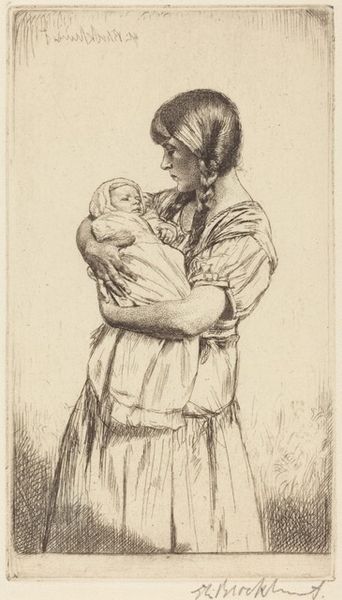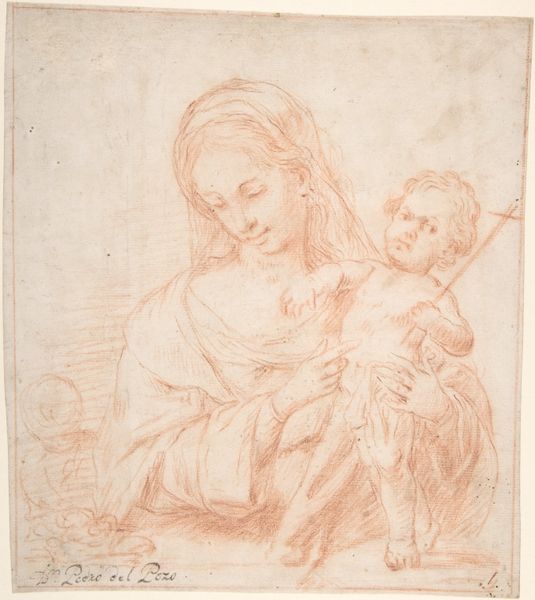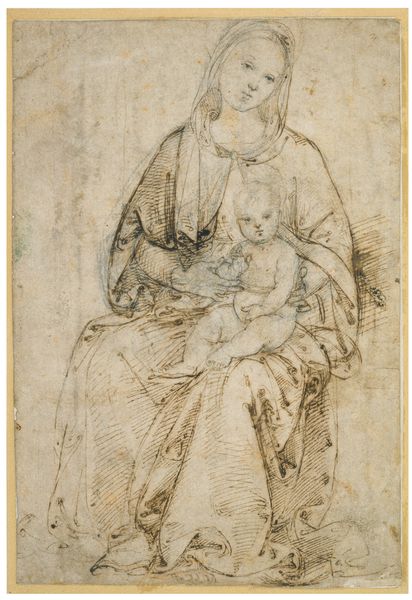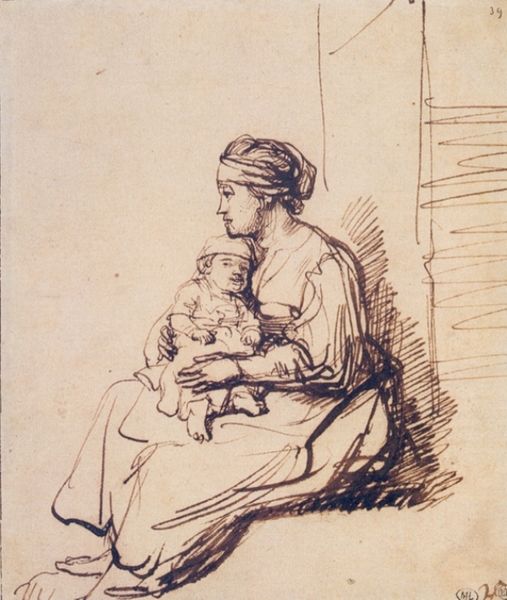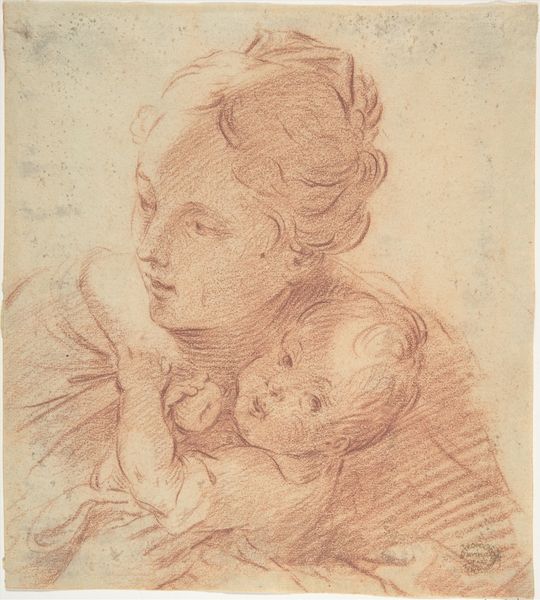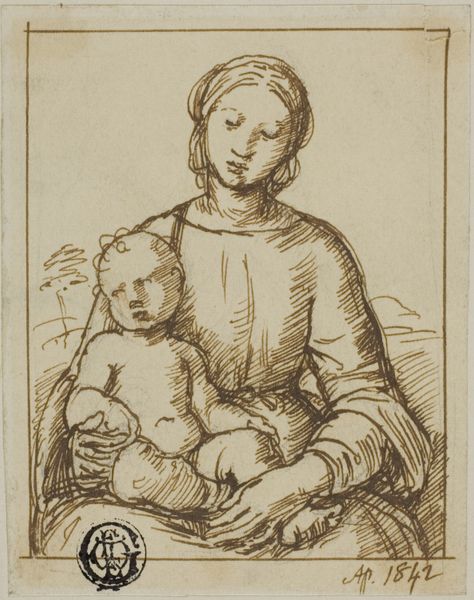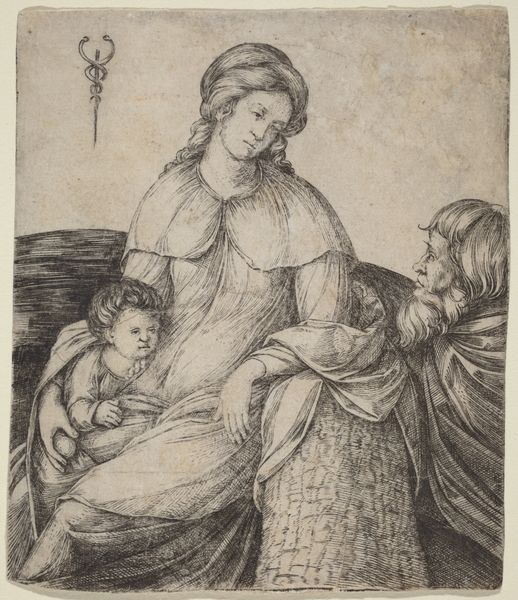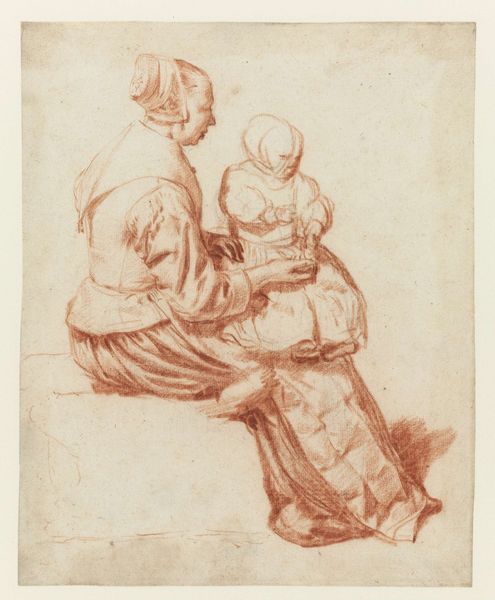
drawing, paper, ink
#
portrait
#
drawing
#
figuration
#
paper
#
11_renaissance
#
ink
#
line
Dimensions: height 169 mm, width 128 mm
Copyright: Rijks Museum: Open Domain
Editor: Here we have Guercino’s “The Holy Family,” created sometime between 1601 and 1666. It’s an ink drawing on paper. The first thing that strikes me is the tenderness in Mary's profile as she gazes at the child. How do you interpret the symbolism within this seemingly simple family portrait? Curator: It's more than a portrait; it’s a carefully constructed icon. Notice how the line work, while loose, creates a sense of gentle protection. The linear style emphasizes their shared gaze—a silent dialogue filled with hope and perhaps, foreboding. Consider the figure in the background; does his presence amplify the protective atmosphere or hint at vulnerability? Editor: I see what you mean. Joseph almost looks like a shadow, but his hands are drawn so deliberately, perhaps suggesting his role as protector, always vigilant. What’s the significance of presenting them in this somewhat minimalist, sketch-like manner, instead of a more ornate style? Curator: The apparent simplicity draws us closer to the human element of the Holy Family. The deliberate use of line encourages contemplation. It’s less about glorifying and more about connecting with the emotional core of the figures. The ink medium adds intimacy. What feelings does the sketch evoke in you? Editor: The unfinished quality somehow makes them feel more real, more relatable, less like distant figures of legend. Like they exist in memory rather than perfect immortal forms. It allows a space for our own emotions. Curator: Precisely. Guercino is playing with our innate understanding of family and faith, creating a resonant image that persists through centuries because of its symbolic, emotional weight. This piece transforms simple lines into profound statements about life, love, and duty, reminding us that these concepts are never simple, just like these strokes of ink.
Comments
No comments
Be the first to comment and join the conversation on the ultimate creative platform.
